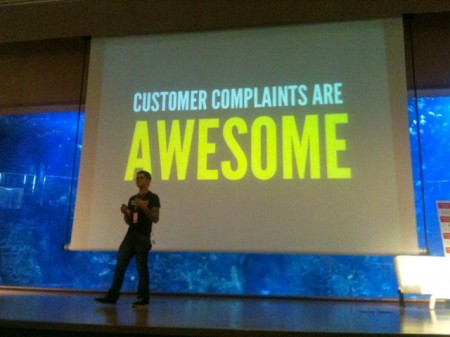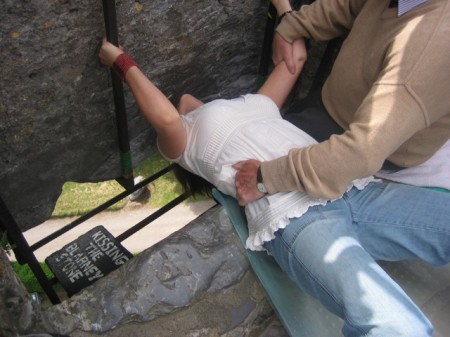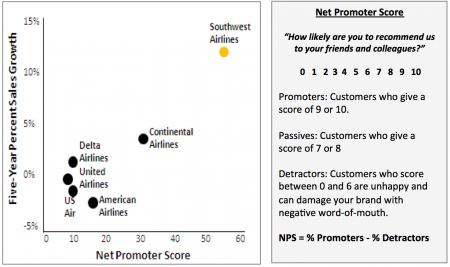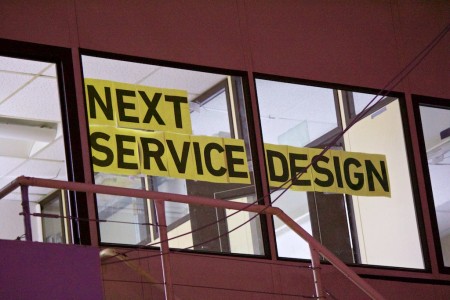The Archives
-
Marketing, social media, Travel & Tourism
Why Social Media outside your own channels is more important
Storytelling
Destination Marketing is storytelling. And by now every DMO is generating content and distributing it through their own channels. Content is shared, people engaged, fans, followers and engagement is measured and reported. Social Media is firmly established as an important channel.
But if you want to start thinking like a level 4 DMO, one of the first things to do is look beyond storytelling through your own channels. The stories people share with each other in their own networks (often private and invisible to marketers) is more credible and trusted than any story a DMO creates.
Evidence
At #SoMeT13AU, Carl McCarthy from Facebook shared that over 70% of travellers update their status and/or share photos while on holiday. Let’s look at the Capilano Suspension Bridge, a populair tourism attraction in Vancouver. The public stats for their Facebook page show a respectable 12,401 fans with 1,275 people talking. But look at an often overlooked little statistic; 449,930 photos have been tagged with this tourism experience.
Let’s look at ten of the more populair attractions in Vancouver (selected by myself from memory).
attraction likes photos tagged Capilano Suspension Bridge Park 12,404 449,930 Vancouver Aquarium 30,777 694,427 Grouse Mountain Resort 22,597 148,824 Vancouver Art Gallery 20,631 64,857 Cypress Mountain 18,270 161,182 Granville Island 15,445 265,967 Science World 14,480 87,268 Museum of Anthropology 6,766 26,146 The Vancouver Lookout 3,003 17,747 Dr. Sun Yat-Sen Chinese Garden 2,446 29,980 Total 146,819 1,946,328 Collectively, these pages have 146,819 fans. More than 3x the fans of Tourism Vancouver’s page. The total number of photos shared is almost 2 Million! If we consider that the average Facebook user has 150+ friends it means that those 2 million photos probably reached tens of millions of people. And those are just photos of attractions where people geotagged the photo. The true number of tourism related photos shared online for Vancouver is exponentially larger. That’s the real Facebook marketing.
There’s also plenty of research that demonstrates the effect of somebody posting a Facebook picture has on their network for example. Anywhere from 20% to 52% of consumers have taken a trip to a destination as a direct result of seeing a photo posted by a friend.
And that’s just Facebook.
Implications for DMOs
The implication is that a DMO marketer needs to look beyond their own channels. Most of the conversation is happening elsewhere and often invisible. But as you can see in my examples above, that doesn’t mean you can’t measure it. The success of growing tourism in your destination goes beyond the activity the DMO manages. It’s a collective effort.
- First thing to do is collaborate with your operators to make sure they make the most out of their own social channels.
- Second is to actively grow the number of visitors sharing their experiences through their social channels. Through encouragement but also by enabling sharing.
- Third, and this is where we get into the future of destination marketing, by actively managing your destination to give visitors more reasons to share their experiences and mitigate any negative stories.
[By the way, I only used Vancouver as an example because I live there, no other reason]
-
Management, Travel & Tourism
NPS is the perfect destination KPI
01.08.13 | Permalink | 12 CommentsA destination brand is shaped by the stories people tell each other. Consumers will share stories about their experiences. Do it right and they’ll do the marketing for you. Under deliver and they will become detractors. It’s the role of the DMO to lead the collection of stakeholders to market to the right people and deliver remarkable experiences.
Fortunately a visitor’s experience is one of the few things a DMO and it’s stakeholders have control over. And NPS, or Nett Promoter Score is the perfect way to measure and benchmark this. NPS measures customer satisfaction by answering one question – How likely is it that you would recommend [brand xyz] to a friend or colleague? On a zero to ten scale, people who score a 9 or 10 are promoters, they will recommend your destination. People who score a 7 or 8 are passive while people who score between 0 and 6 are detractors. They will tell others not to go. When you subtract the number of detractors from your promoters you end up with your Nett Promoter score.
There’s a lot of evidence that a high NPS is a strong indicator for corporate growth. Southwest is known for it’s friendly staff and business practices. It stands out from most other airlines in the US. Southwest built a customer centered culture and considers “a high NPS indicates a strong competitive advantage“. They have posted 39 years of consecutive profits and this blog posts quantifies the results of their customer service efforts.
I’ve been thinking about this for a while and have concluded that every DMO should measure NPS. Because not only is NPS a good indicator of future growth, it will also get staff and stakeholders to focus on the consumer and the customer experience.
Managing your destinations reputation is more important than ever. And it’s a collective responsibility. Use NPS to measure and benchmark it. Read The Ultimate Question to learn more about NPS.
-
Experience Design, Internet, Management, Marketing, social media, Travel & Tourism
3 things to think about in 2013
Happy New Year everybody! Here are three things off the top of my head that are important things to consider for 2013. Do you have any more?
1) PUT SOCIAL AT THE CORE
I think it’s pretty clear by now that social media has a major impact on the travel decision making process. If your tourism business or DMO hasn’t realized this yet you better catch up. You should be at level 3 or higher by now.
Most marketers think of social media as an add-on to a traditional campaign, or at least start with traditional thinking. It’s time to flip it around. Start with a social idea and support it with traditional methods. Or do traditional things in a social way. For example, we recently worked with a DMO who let it’s Facebook community vote on what photos would be published in it’s visitor guide.
2) START USING SERVICE DESIGN
Mitigating a mediocre experience with brilliant marketing doesn’t cut it anymore. The experience IS your marketing and the stories your visitors tell each other is what it’s all about. You have two choices. First choice is to join the race to the bottom and keep offering specials, discounts and special offers. The second one is to create remarkable experiences people love and want to be part of, regardless of what it costs.
If your choice is the latter, you need to start thinking about service design. When you’re an operator you need to start thinking about the end-to-end experience you offer your guest. When you are a DMO you need to think about the end-to-end destination experience. Service design is gaining a lot of momentum in Europe, especially in Austria where destinations are starting to take an active role in the design of the destination experience.
3) MOBILE: THINK DEVICE PLUS CONTEXT
I was on a panel at a conference in Barcelona recently and somebody asked about mobile. Before I could even think about it I said “it’s not about mobile, it’s about device + context”. I probably heard it somewhere before but I have never really thought about it like that. But it’s true. Whether you build a desktop site, a mobile site, an adaptive site or an app, it’s not the device that’s important. It’s the context of use.
When you search google maps, it takes into account your device, where you are and what date and time it is. That’s the context of your usage and the information you get back takes that into account. You need to so the same thing. A consumer accessing your content at home is looking for very different things than a consumer walking down the street in your destination.
Now here’s the kicker. Often that means people use another website than yours. Somebody walking down the street looking for a restaurant is going to use Google Maps, Yelp or Tripadvisor, not a DMO website. Even a consumer planning as trip might never even make in onto your website (hello travel bloggers). Your content online strategy needs to include content on third party websites. From inspiration to transaction. Just like we used to do it in the 90s with travel guides and tour operator brochures.
-
Experience Design, Marketing, Travel & Tourism
Customer Complaints are Awesome

This was one of the messages from John O’Nolan‘s fantastic presentation at the DMO’s and social media conference in Valancia last week.
John rightfully pointed out that when people care enough about your product, take time out of their day and go through the effort to tell you that you need to fix a problem, it probably means they care and want you to succeed.
This is a huge opportunity. Fix the problem, invite them back and you might have a customer for life, and an advocate for your business.
That’s marketing.
I can’t wait for his book ‘Designing Emotion‘ to come out.
-
Experience Design, Marketing, Think! Social Media, Travel & Tourism
In business to make memories
04.25.11 | Permalink | 3 CommentsI think it was Michele McKenzie who said at Online Revealed Canada that people in the tourism industry should realize they’re in the business of making memories first and putting heads to beds second. I agree.
If you haven’t seen Simon Sinek’s TED video below, you really should. His book is a worth a read as well.
Simon’s hypothesis is simple. Businesses communicate wrong. They communicate WHAT they do, then HOW they do it. Instead they should communicate WHY they do things, then HOW they do it, then WHAT they do. When you inspire people about WHY you do things, the how and what makes more sense.
At Think! we believe we can make people’s lives better by making tourism experiences better, one destination or product at a time. We do this by working with DMO’s and tourism product operators, helping them create remarkable products and market them to the niche audiences that truly love them. We have a methodology and we offer strategic development, training, products and delivery services to achieve this.
Why should somebody visit your destination or business? Don’t tell me because you have the best food, the best golf, best art scene or the cleanest rooms. That’s WHAT you do. And everybody else claims the same thing.
Disney themeparks are in the business of making “magical” memories for families. Vegas is in the business of making memories that “stay in Vegas” to anybody but families. They both know their WHY and so does everybody who works there, and their customers who visit know it as well.
What’s your WHY?
-
Experience Design, Marketing, Travel & Tourism
Traditions and folklore as powerful tourism motivators
12.05.10 | Permalink | 2 Comments
When we were on vacation in Ireland a few years ago we went to kiss the Blarney Stone of course. When I was trying to find out what the stone is about, why people kiss it and when it all started it turned out there are all kinds of legends but no real definitive answer. The only reason why people kiss the stone seems to be because everybody else does it.
We also went to this festival called Puck Fair, where a little town parties for a whole weekend. They catch a wild goat (the puck), get it crowned as king by a young girl and hoist it on top of the main stage for the duration of the event. Why? Nobody is really sure. But the town is packed.
In Rome, people throw about 3000 euros a day in the Trevi fountain. In Prague, people rub the Statue of St John Nepomuk.
People are social and people want to be part of a story. For a tourism business or DMO, traditions can be remarkable experiences that put people in the story of your destination. People will go out their way not to miss them.
What traditions and folklore does your destination have people can be part of?
It doesn’t have to be steeped in history either. It can be as simple as nailing a pair of shoes to a tree. Next thing you know it’s a tradition, everybody is doing it and you have a tourist attraction like in Prince Rupert, BC.








